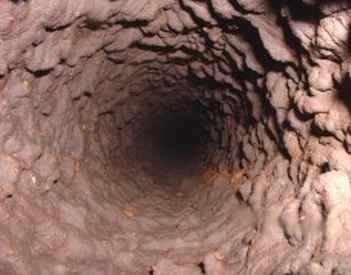
Water pipe deposits
Iron and manganese deposits form inside metal pipes, eventually leading to significantly reduced flows.
electrically charged pipe
Iron and manganese are in solution, i.e. they are suspended in water, and their suspension is due to their electrical charge. As charged particles they tend to disperse evenly throughout the water, as "like" charges repel. One way to remove these charged particles is by attracting them with an oppositely charged electrode. In this case the conductive metal water pipe is acting as the oppositely charged electrode.
As iron and manganese are both positive, this would support the notion that the conductive metal pipe is being negatively charged by mains power alternating current. (see Ionisation of water pipes demonstrated).

These deposits differ from expected corrosion, which would tend to be oxidation of the metal pipe evidenced by scale and thinning of the pipe walls.
Instead, the iron and manganese build up on the pipe wall and trap particular matter. This requires the pipe to be regularly flushed out. Removal of the deposits is difficult, if not impossible, with small pipe sizes.
Importantly, this also demonstrates that the voltages involved are more than sufficient to act at an ionic level despite the water pipe being nominally grounded.
http://www.corrview.com/corr_06.htm.
Stephen G Butcher (Posted 27/01/09)
